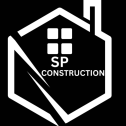build with us
design & Plan
- Civil Engineering Design deals with innovative theoretical, numerical and experimental methods for current and new building materials, such as concrete, steel, aluminium, glass, timber, masonry, composite materials, and all aspects of conceptual, structural and performance-based design, experimental testing and numerical modelling, including construction, maintenance and demolition, for the entire life-cycle of structures. The inclusion of geotechnical engineering and soil mechanics from a structural engineering perspective completes the picture.
Design and Construction
In the planning of facilities, it is important to recognize the close relationship between design and construction. These processes can best be viewed as an integrated system. Broadly speaking, design is a process of creating the description of a new facility, usually represented by detailed plans and specifications; construction planning is a process of identifying activities and resources required to make the design a physical reality. Hence, construction is the implementation of a design envisioned by architects and engineers. In both design and construction, numerous operational tasks must be performed with a variety of precedence and other relationships among the different tasks.
Several characteristics are unique to the planning of constructed facilities and should be kept in mind even at the very early stage of the project life cycle. These include the following:
Nearly every facility is custom designed and constructed, and often requires a long time to complete.
Both the design and construction of a facility must satisfy the conditions peculiar to a specific site.
Because each project is site specific, its execution is influenced by natural, social and other locational conditions such as weather, labor supply, local building codes, etc.
Since the service life of a facility is long, the anticipation of future requirements is inherently difficult.
Because of technological complexity and market demands, changes of design plans during construction are not uncommon.
8 Steps in the Design Process
1.Feasibility Study.
2.Programming.
3.Schematic Design.
4.Design Development.
5.Construction Documentation.
6.Bidding and Negotiation.
7.Construction Administration.
8.Post-Occupancy Training.
Plan and Construction
A construction plan is created during the construction planning process and includes the following:
A written document that defines the methodologies and approach
Blueprints, computer-aided designs, photographs, and other images that illustrate the design
A work breakdown structure that identifies all the activities that make up the project
A construction project schedule that organizes all the project activities on a timeline
The construction project participants and stakeholders such as contractors, sponsors, crews, etc.
Creating a construction plan is of crucial importance in construction management, given that such projects tend to be large and complex. Proper and thorough construction planning greatly increases the likelihood of a successful project.
The more information the construction plan has about your project, the less likely it will be that issues arise during the execution phase. Before the ground is broken your construction plan (and your construction schedule) should be as solid as a rock.
Construction project management software that’s complete with online Gantt charts can help you guarantee that all that robust construction planning won’t go to waste when it comes to the execution phase.
5 Steps of construction plan
1: Initiate the project
Every construction project, no matter how big or small, needs to start with a business case that lays out the feasibility of the project and what it’s going to take to get the job done.
2: Create the project plan
Now comes the part where you’ll turn the PID into a more concrete construction plan by setting goals that are S.M.A.R.T. and C.L.E.A.R. You’ll take the specific resources you’ve listed in the previous step and use that to inform a broader strategy that will guide how you actually execute the project.
3: Execute the plan
It’s time to execute your plan. Begin by creating a high-level project timeline, including major milestones and key deliverables, to keep everything on track. Once you have a timeline in place, start mapping out the details of each project stage.
Next, call a team meeting to go over the project plan and construction schedule. Talk to each person on your crew individually, if possible, to discuss expectations and allow them to ask questions about anything they’re confused about.
4: Track project progress
It’s essential that you accurately track the performance of your construction project team and ensure they’re meeting the parameters you’ve set. In the event of an unsuccessful project, this process ensures you have data that you can dive into to figure out why you failed so it doesn’t happen again.
5: Close out and evaluate the project
Just because the building is constructed doesn’t mean you’re done with the planning process. The lessons learned and data gathered from this project will help inform how you approach your next project, so it’s important to perform the close-out tasks. This work can also serve as some of the pre-construction planning for your next project.
We undertake execution of Civil Structural Concrete Construction Works right from Design & Plan, foundation stage to the completion stage, which includes erection of form-work, steel work, concreting. The final stage of job execution of design and plan includes finishing of the concrete surfaces after shuttering, Laying and placing in position the infrastructure for electrical (low & high voltage), plumbing network. Our work for Structural Construction includes Foundations, Substructures and Super Structures.
For More Details Contact Us.
You Can Also Follow Us On Facebook.
